Hello, yogis and wellness seekers!
What should I wear to class is a typical question that I get asked a lot by men and women
I’m Beth Shaw, founder of Be YogaFit Studio and YogaFit Training Systems Worldwide. With over 30 years in the yoga and fitness industry, I’ve seen firsthand how the right attire can transform your practice from a struggle to a seamless flow of energy and confidence. At Be YogaFit Studio, our classes are designed to challenge you, make you sweat, and help you connect deeply with your body and mind. But let’s be real—sweating profusely is part of the journey, especially in our dynamic, heated sessions. That’s why dressing for success isn’t just about aesthetics; it’s about enhancing your performance, boosting your self-esteem, and ensuring you feel empowered every step of the way.
Lets explore the importance of looking good and feeling good while dressing for a sweaty yoga class. We’ll dive into why dark colors are your best friend for hiding sweat stains and creating a slimming silhouette, the necessity of comfort in your clothing choices, the advantages of tights over shorts (especially with our use of elastic bands), why T-shirts might sabotage your downward dog, and the sweet spot of form-fitting yet not-too-tight apparel. By the end, you’ll have a roadmap to curate a yoga wardrobe that supports your practice at Be YogaFit Studio, where we blend traditional yoga with modern fitness for ultimate mind-body harmony. Let’s roll out the mat and get into it—your next class awaits!
We’re excited to announce we’ve got new clothing coming in for men and women next week at the Be YogaFit Studio in Lauderdale By The Sea come on in and get your new outfit tanks. Sweats, tights, sweatshirts all waiting for you.
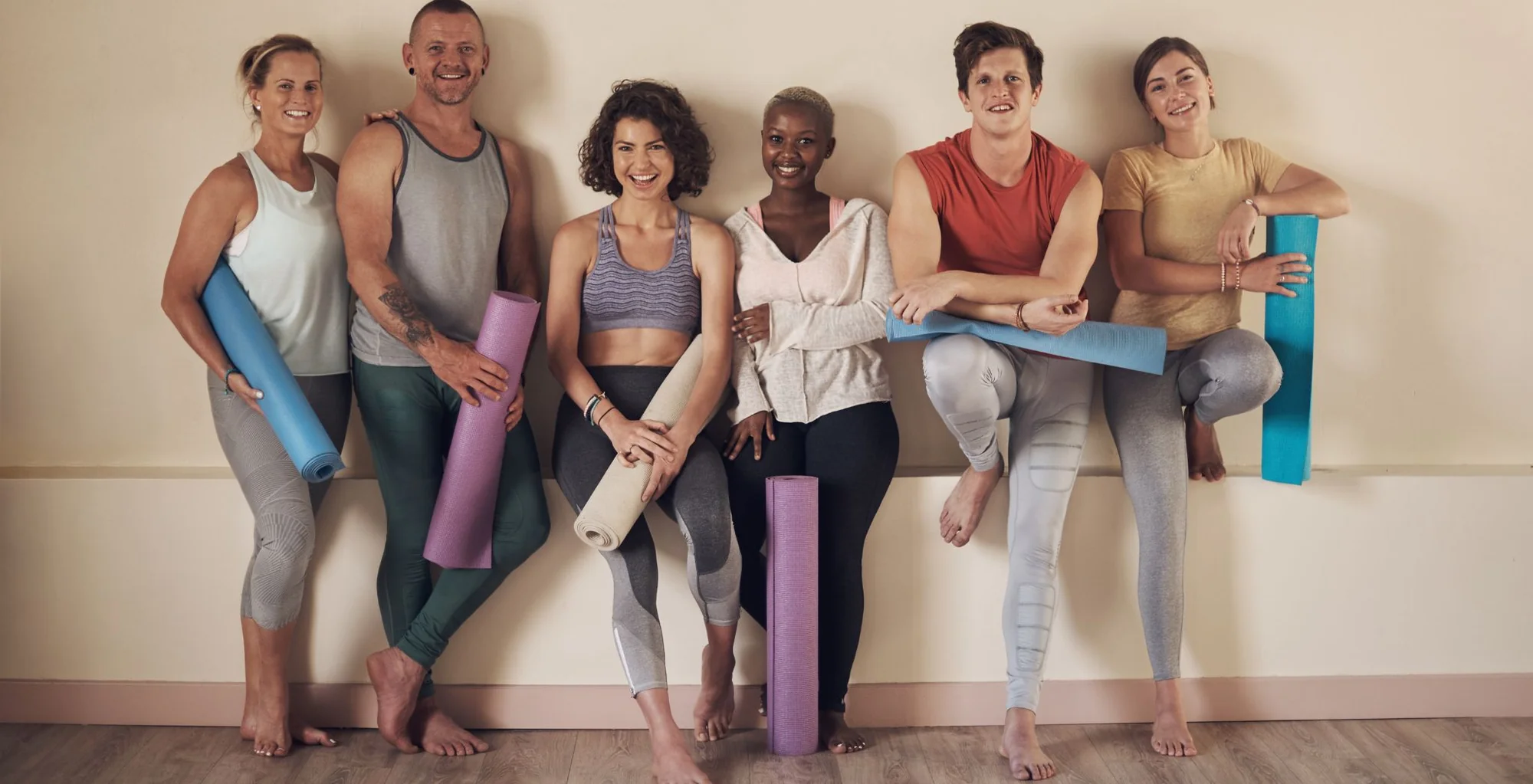
The Psychology of Looking Good: How Your Yoga Attire Boosts Confidence and Performance
Looking good in yoga class isn’t vanity; it’s a powerful tool for mental and physical success. At Be YogaFit Studio, we emphasize that when you feel attractive in your outfit, you’re more likely to show up consistently, push through challenging poses, and radiate positive energy to those around you. Research in sports psychology shows that “enclothed cognition”—the idea that clothes influence our mindset—plays a big role in exercise. Wearing gear that makes you look polished can enhance focus, reduce self-consciousness, and even improve posture.
In a sweaty class, this starts with strategic choices that keep you looking put-together despite the perspiration. Dark colors, like black, navy, or deep charcoal, are ideal because they camouflage sweat marks effectively. Lighter shades, such as white or pastels, tend to show every drop, which can distract you and make you feel exposed. I’ve had students tell me that switching to darker hues made them feel more invincible, allowing them to dive deeper into flows without worrying about visible stains.
Moreover, dark colors have a slimming effect, thanks to optical illusions in fashion design. They create a streamlined silhouette, absorbing light rather than reflecting it, which can make your form appear more toned and elongated—perfect for yoga’s emphasis on alignment and grace. At YogaFit, where we incorporate strength-building elements, this visual boost can motivate you to hold that plank a little longer or refine your warrior pose with precision.
But looking good goes hand-in-hand with feeling good. Comfort is non-negotiable; if your clothes chafe or restrict, your mind shifts from breathwork to discomfort, derailing the meditative aspect of yoga. Choose fabrics like moisture-wicking blends (think nylon-spandex with bamboo or recycled polyester) that feel soft against the skin. These materials pull sweat away, keeping you dry and focused. In our sweaty classes, where temperatures can rise to promote detoxification, breathable attire prevents overheating and allows for full range of motion.
Remember, at Be YogaFit Studio, our philosophy is holistic: Dressing for success means aligning your outer appearance with inner strength. When you look good, you feel empowered, and that energy amplifies your practice. Next, let’s talk about why tights reign supreme over shorts in our elastic-band-heavy routines.
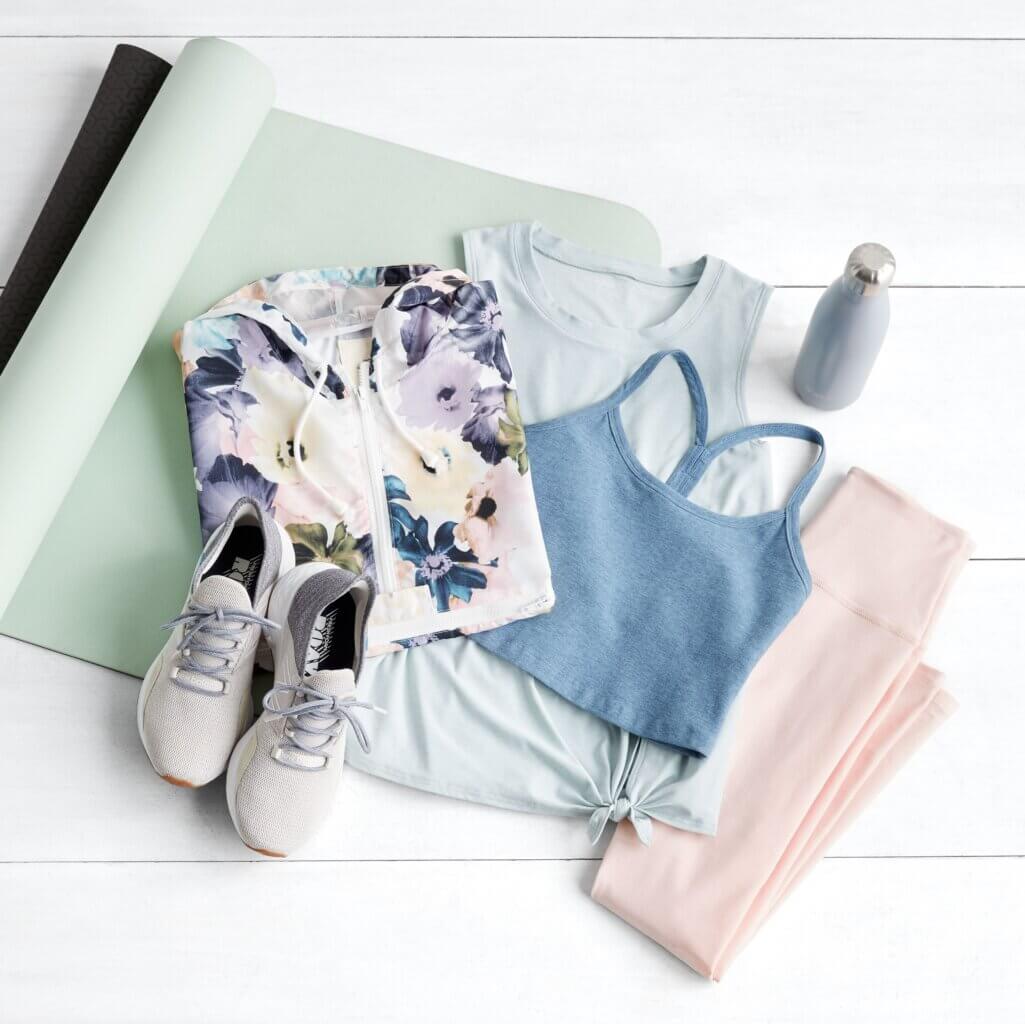
Tights vs. Shorts: Protecting Your Skin and Enhancing Comfort in Elastic Band Workouts
One of the unique aspects of classes at Be YogaFit Studio is our integration of elastic bands for resistance training within yoga flows. These bands add intensity, building strength in poses like bridges or lunges, but they can be tough on bare skin. That’s why I always recommend tights over shorts for sweaty sessions—they provide a protective barrier that prevents irritation and enhances your overall experience.
Elastic bands, while fantastic for targeting muscles like glutes and shoulders, can rub against exposed legs, causing chafing, redness, or even minor abrasions during repetitive movements. In a heated, sweaty environment, this friction intensifies as sweat acts like a lubricant gone wrong. Tights, especially full-length or capri styles, create a smooth layer that lets the band glide without direct contact. Students in my YogaFit Training Systems often report fewer distractions and better form when wearing tights, allowing them to focus on breath and alignment rather than discomfort.
Beyond protection, tights offer compression benefits that support circulation and reduce muscle fatigue. Mild compression can help with recovery by minimizing swelling post-class, which is crucial after our vigorous sequences. Look for high-waisted options that stay put during inversions—no constant adjustments needed, keeping your flow uninterrupted.
Shorts, while airy, fall short in sweaty yoga for several reasons. They expose more skin to mats (which, despite our rigorous cleaning at Be YogaFit, can harbor bacteria), and in poses involving floor work, they might ride up, leading to awkward tugs. Plus, in a community setting, tights provide modest coverage, fostering a sense of security that lets you fully immerse in the practice.
Feeling good in tights means selecting the right fit: Not baggy, but with enough stretch to move freely. Brands using sustainable materials align with YogaFit’s eco-conscious ethos—think recycled fabrics that wick moisture efficiently. Pair them with a supportive sports bra for women or a fitted tank for men, and you’re set for success. This choice isn’t just practical; it elevates your look, making you feel sleek and ready to conquer.
As we sweat it out, remember: Dressing smartly with tights ensures you end class feeling invigorated, not irritated. Up next, we’ll tackle why T-shirts are a no-go and what to wear instead for unobstructed poses. If you want to sweat more it’s OK to wear a long sleeve T-shirt some people love sweating I love sweating sometimes I’ll wear a sweatshirt over my tank top just to sweat more especially with the glow flow lights.
Looking good in yoga class isn’t vanity; it’s a powerful tool for mental and physical success. At Be YogaFit Studio, we emphasize that when you feel attractive in your outfit, you’re more likely to show up consistently, push through challenging poses, and radiate positive energy to those around you. Research in sports psychology shows that “enclothed cognition”—the idea that clothes influence our mindset—plays a big role in exercise. Wearing gear that makes you look polished can enhance focus, reduce self-consciousness, and even improve posture.
In a sweaty class, this starts with strategic choices that keep you looking put-together despite the perspiration. Dark colors, like black, navy, or deep charcoal, are ideal because they camouflage sweat marks effectively. Lighter shades, such as white or pastels, tend to show every drop, which can distract you and make you feel exposed. I’ve had students tell me that switching to darker hues made them feel more invincible, allowing them to dive deeper into flows without worrying about visible stains.
Moreover, dark colors have a slimming effect, thanks to optical illusions in fashion design. They create a streamlined silhouette, absorbing light rather than reflecting it, which can make your form appear more toned and elongated—perfect for yoga’s emphasis on alignment and grace. At YogaFit, where we incorporate strength-building elements, this visual boost can motivate you to hold that plank a little longer or refine your warrior pose with precision.
But looking good goes hand-in-hand with feeling good. Comfort is non-negotiable; if your clothes chafe or restrict, your mind shifts from breathwork to discomfort, derailing the meditative aspect of yoga. Choose fabrics like moisture-wicking blends (think nylon-spandex with bamboo or recycled polyester) that feel soft against the skin. These materials pull sweat away, keeping you dry and focused. In our sweaty classes, where temperatures can rise to promote detoxification, breathable attire prevents overheating and allows for full range of motion.
Remember, at Be YogaFit Studio, our philosophy is holistic: Dressing for success means aligning your outer appearance with inner strength. When you look good, you feel empowered, and that energy amplifies your practice. Next, let’s talk about why tights reign supreme over shorts in our elastic-band-heavy routines.
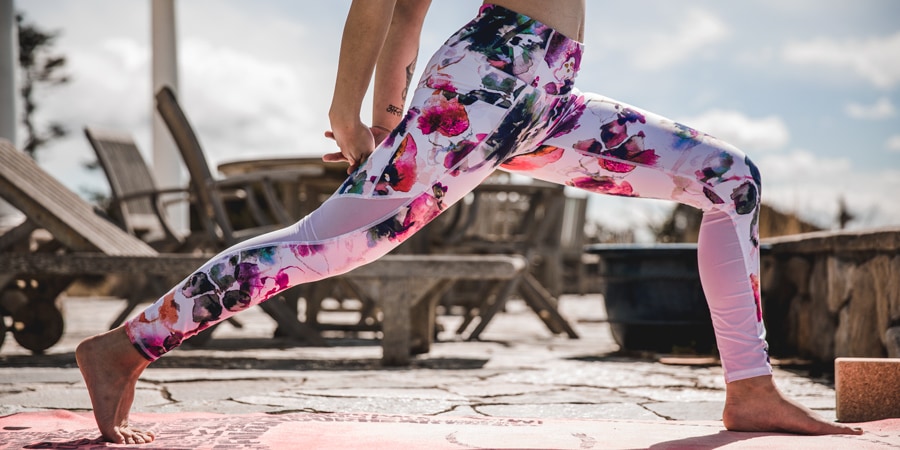
Ditching the T-Shirt: Preventing Wardrobe Malfunctions in Inverted Poses
Picture this: You’re in a invigorating downward facing dog at Be YogaFit Studio, feeling the stretch in your hamstrings and the calm in your mind—until your loose T-shirt flips over your head, bunching at your face and disrupting your zen. It’s a common complaint I hear from new yogis, and it’s why I strongly advise against T-shirts in sweaty classes. They might seem casual and comfy, but in dynamic yoga, they often become a hindrance rather than a help.
The issue stems from gravity and movement. In inversions like downward dog, shoulder stands, or even forward folds, loose fabric shifts upward, obstructing vision, restricting breathing, and causing unnecessary adjustments. In a sweaty session, where perspiration makes clothes cling unpredictably, this can lead to frustration and lost focus. I’ve seen students pause mid-flow to tuck in shirts, breaking their rhythm and momentum.
Instead, opt for fitted tanks or long-sleeve tops designed for yoga. These stay in place, thanks to grippy hems or built-in bras, allowing seamless transitions. Moisture-wicking properties are key—fabrics like merino wool blends or technical synthetics evaporate sweat quickly, keeping you cool and dry. For men, compression shirts provide similar benefits, enhancing muscle awareness without the bulk.
Looking good in these alternatives means embracing styles that flatter your form. A well-fitted tank can highlight your shoulders and core, boosting that slimming effect from dark colors. At YogaFit, we encourage layering: Start with a base layer tank and add a light jacket for warm-up, shedding it as heat builds.
Feeling good extends to fabric choice—avoid cotton, which absorbs sweat and becomes heavy, opting for breathable synthetics that feel like a second skin. This prevents the “wet T-shirt” look and feel, maintaining your composure. In our classes, where we flow through sun salutations and power poses, unrestricted attire lets you breathe deeply and move intuitively.
By swapping T-shirts for smarter options, you’re dressing for success: Unimpeded, confident, and fully present. Now, let’s balance that with the art of form-fitting clothing—snug but not suffocating.
The Goldilocks Principle: Form-Fitting but Not Too Tight for Optimal Movement
In yoga, your clothes should move with you, not against you. That’s the essence of form-fitting attire—close enough to reveal alignment without constraining your breath or circulation. At Be YogaFit Studio, where precision in poses is key, too-loose clothes can hide misalignments, while overly tight ones cause discomfort and restrict blood flow. It’s all about finding that “just right” balance for looking and feeling your best in a sweaty class.
Form-fitting gear excels in providing feedback: Instructors can spot and correct form easily, reducing injury risk. For instance, in a warrior II, fitted leggings show knee alignment over the ankle, ensuring safety. This closeness also minimizes fabric bunching, keeping you streamlined and focused.
But beware the trap of too-tight clothing. Compression that’s excessive can dig into skin, cause numbness, or even affect digestion during twists. In sweaty conditions, tight seams might chafe, turning a blissful session into an itchy ordeal. I recommend trying outfits in store with yoga moves—bend, twist, invert—to test comfort.
Materials matter: Seek four-way stretch fabrics that hug without squeezing, like those with elastane for flexibility. High-rise waists prevent slippage, and seamless designs reduce irritation. Dark, form-fitting pieces not only slim but also create a cohesive, professional look that screams “I’m here to thrive.”
Feeling good means prioritizing breathability and support. For women, medium-support bras handle the bounce in faster flows; for all, anti-odor tech keeps you fresh post-sweat. At YogaFit, we see students glow with confidence in well-fitted attire, their energy unblocked.
This principle ties back to overall success: When clothes fit perfectly, you forget them, immersing in the practice. Layer with intention—perhaps a loose wrap for savasana—and you’re set. Make sure you bring a towel to class at the Be YogaFit Studio.
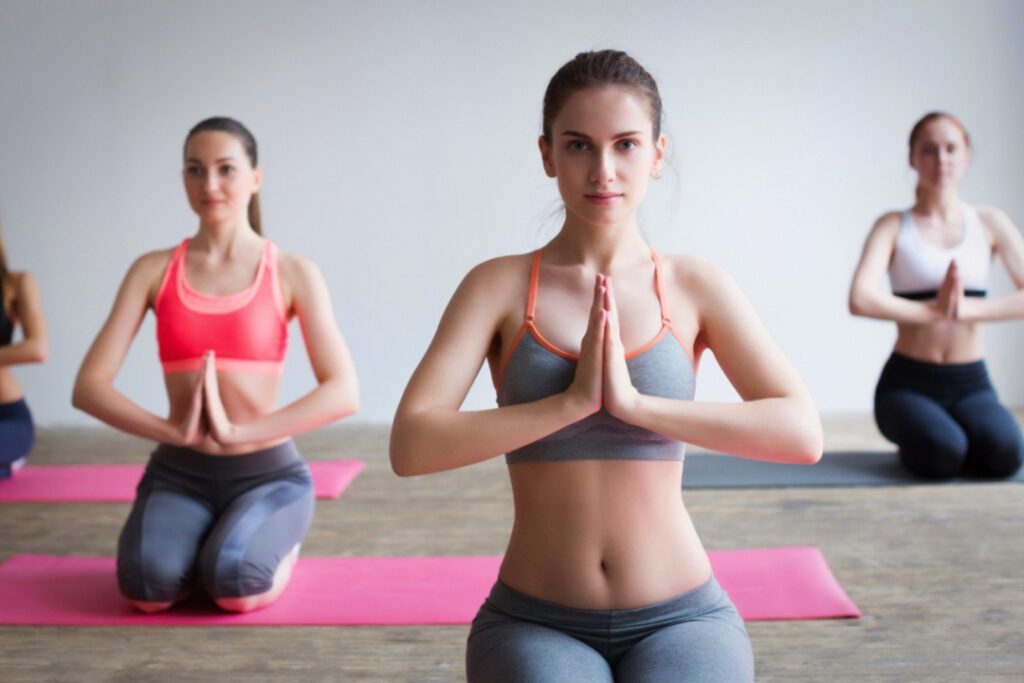
Embracing Dark Colors: Hiding Stains, Slimming Silhouettes, and Sweat Management Mastery
Let’s circle back to dark colors, a cornerstone of sweaty yoga dressing. Beyond aesthetics, they’re practical warriors against visible perspiration. In Be YogaFit’s heated rooms, sweat is inevitable and beneficial—it detoxifies and cools the body. But light colors turn translucent or spotted, drawing unwanted attention and eroding confidence.
Dark shades absorb light and moisture discreetly, letting you sweat in peace. Navy, burgundy, or forest green add variety while maintaining this benefit. The slimming effect? It’s psychological and visual—darks create depth, making the body appear leaner, which can motivate during mirror work in our studios.
Pair with performance fabrics: Quick-dry tech ensures evaporation, preventing clamminess. At YogaFit, we advocate sustainable darks from eco-brands, aligning with our earth-friendly values.
Feeling good in darks means versatility—mix patterns subtly for personality without sacrificing function. This choice empowers, letting sweat fuel your practice, not foil it.
Comfort as King: Prioritizing Feel-Good Fabrics and Personalized Fit
Ultimately, dressing for success hinges on comfort—you must wear something that feels like an extension of yourself. At Be YogaFit Studio, discomfort distracts from mindfulness, so choose pieces that nurture.
Soft, tag-free designs prevent itching; adjustable straps customize fit. Test for sweat sessions: Does it stay put? Breathe? Support?
Personal style matters—infuse colors or prints that uplift, but prioritize function. Comfort breeds consistency, turning sporadic classes into lifelong habits.
In our community, comfortable yogis are engaged yogis, sharing positive vibes.
Integrating Accessories and Footwear: Completing Your Yoga Ensemble
Don’t overlook accessories—they enhance dressing for success. Grippy socks prevent slips on mats; headbands tame hair in sweat.
Minimal jewelry avoids distractions; a supportive mat towel absorbs excess moisture.
Barefoot is best, but if needed, yoga-specific shoes for transitions.
These details polish your look, amplify feeling good
I have gotten so deep in my yoga practice. I don’t even want to wear earrings anymore. I keep my jewelry minimalistic and take my watch off to teach. I find the students who are wearing Apple watches get easily distracted in class so take your technology off your body before you start practicing plus who needs extra EMF waves hitting their body.
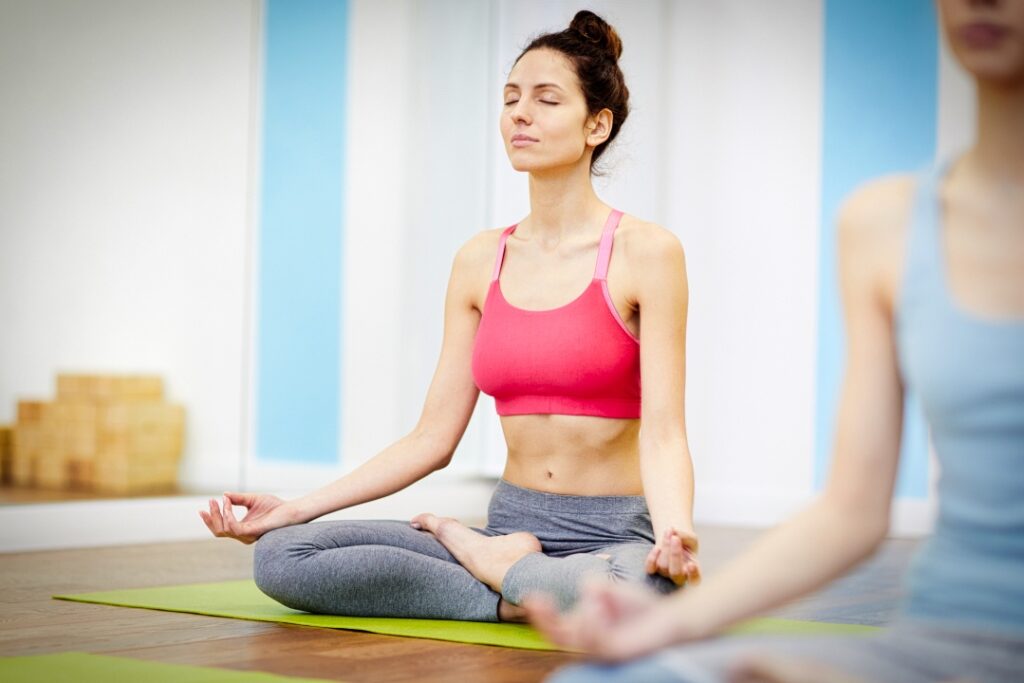
At YogaFit, sustainability is core. Choose recycled, organic fabrics in dark hues for guilt-free sweating.
Brands like those using plant-based dyes reduce environmental impact.
I wear a lot of tights that are made from recycled plastic bottles. This makes me feel good ethically, aligning body, mind, planet.
When you look good, you feel good and when you feel good, you have confidence
Avoid cotton—it’s absorbent but heavy when wet.
Skip perfumes; scents intensify in heat.
I always shower before class I like to be fresh
Over-layering leads to overheating—start light.
Trial and error refines your process
Wear what you feel good in, but remember dark colors rule
Dressing for success in a sweaty yoga class at Be YogaFit Studio is about harmony—looking good boosts confidence, feeling good ensures focus. From dark colors hiding stains and slimming, to tights protecting skin, ditching T-shirts for clear poses, and form-fitting comfort, these choices elevate your experience.
Implement these tips, and watch your practice soar. Join us at Be YogaFit—your mat awaits. And our new Be YogaFit Clothing is calling your name – so you feel good and look good.
Namaste,
Beth Shaw